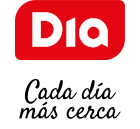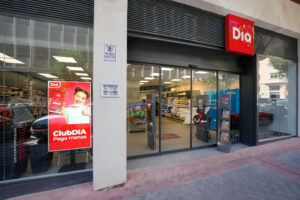In Q1, Dia Group posted gross sales under banner of EUR2.27bn, up 0.2%
May 10, 2018
In the first quarter of 2018, Dia Group generated gross sales under banner of EUR2.27bn, up 0.2% in local currency compared to the first quarter of 2017.
In Spain, like-for-like sales increased by 0.5%. As announced, Dia Group is continuing with its intensive store remodelling programme. In the first three months of the year, the company remodelled a total of 480 stores, of which 457 were in Spain. At this pace, the company is ahead of the announced remodelling plan.
Online sales reached EUR18m in the first quarter of the year in Spain, up by 48% compared to the same period last year.
“We achieved another quarter of positive LFL sales growth in Spain in Q1 2018, being more pricecompetitive than in the previous year. At the same time, we implemented an ambitious remodelling plan, upgrading 480 stores in Iberia, with very good results. The adjusted EBITDA margin in Spain was lower than in the previous year but recovered clearly following the sharp decline seen in the last quarter of 2017.
Emerging Markets continued growing both in sales and adjusted EBITDA despite the negative impact of food deflation in Brazil. We expect a positive recovery trend in sales in Iberia for the coming quarters as we progress with our plans to upgrade stores, open new ones, and improve customer satisfaction, while Emerging Markets will contribute better LFL sales growth and more openings. Sales growth acceleration is our top priority, representing the best way to achieve our goals for 2018”, declared Ricardo Currás, Dia Group CEO.
The Dia Group’s comparable sales rose by 1.9%.
Adjusted EBITDA was down by 6.6% in local currency, while underlying net profit fell by 33% to EUR28.6m. At the end of March 2018, the company had 7,385 stores
GLOSSARY
- Gross sales under banner: Total turnover value obtained in stores, including indirect taxes (sales receipt
value) in all the company’s stores, both owned and franchised. - LFL sales growth under banner: Growth rate of gross sales under banner at constant currency of the stores
that have been operating for more than thirteen months under the same business conditions. - Other items excluded from adjusted EBIT: Volume of costs and revenues the company isolates in the management accounts to gain a better understanding of the underlying performance of the core business during the period. Items usually excluded from adjusted EBIT are classified between “Other cash items” (Expenses relating to acquisitions, expenses for restructuring and efficiency projects, expenses relate to the transfer of own stores to franchises, and gains on disposal of assets), “Expenses related to share-based payments transactions” and “Other non-cash items” (Losses on write-down of fixed assets, impairment of fixed assets and amortization related to the closing of stores).
- Adjusted EBITDA: Operating profit after adding back depreciation and amortization (including amortization related to the closing of stores and impairment of fixed assets), losses on write down of fixed assets, “Other cash items” and “Expenses related to share-based payments transactions”.
- Adjusted EBIT: Operating profit after adding back “Other cash items”, “Expenses related to share-based payments transactions” and “Other non-cash items”.
- Underlying net profit: Net income calculated on net profit attributable to the parent company, adjusted by “Other items excluded from adjusted EBIT”, “Items excluded from financial income and expenses”, “Items
- excluded from income tax” and “Losses net of taxes of discontinued operations”.
- Basic EPS: Fraction of the company’s profit calculated as net attributable profit divided by the weighted average number of shares.
- Underlying EPS: Fraction of the company’s profit calculated as underlying net profit divided by the weighted average number of shares.
- Net financial debt: Overall financial situation of the company that results by subtracting the total value of company’s short-term, long-term financial debt, other financial liabilities from the total value of its cash, cash equivalents, and other liquid assets. All the information necessary to calculate the company’s net debt is included in the balance sheet.
- Cash from operations: Adjusted EBITDA less “Other cash items”, less Capex excluding acquisitions. This internally calculated cash flow measure is included as one of the key financial metrics of the long-term incentive plan for the company’s top management.






